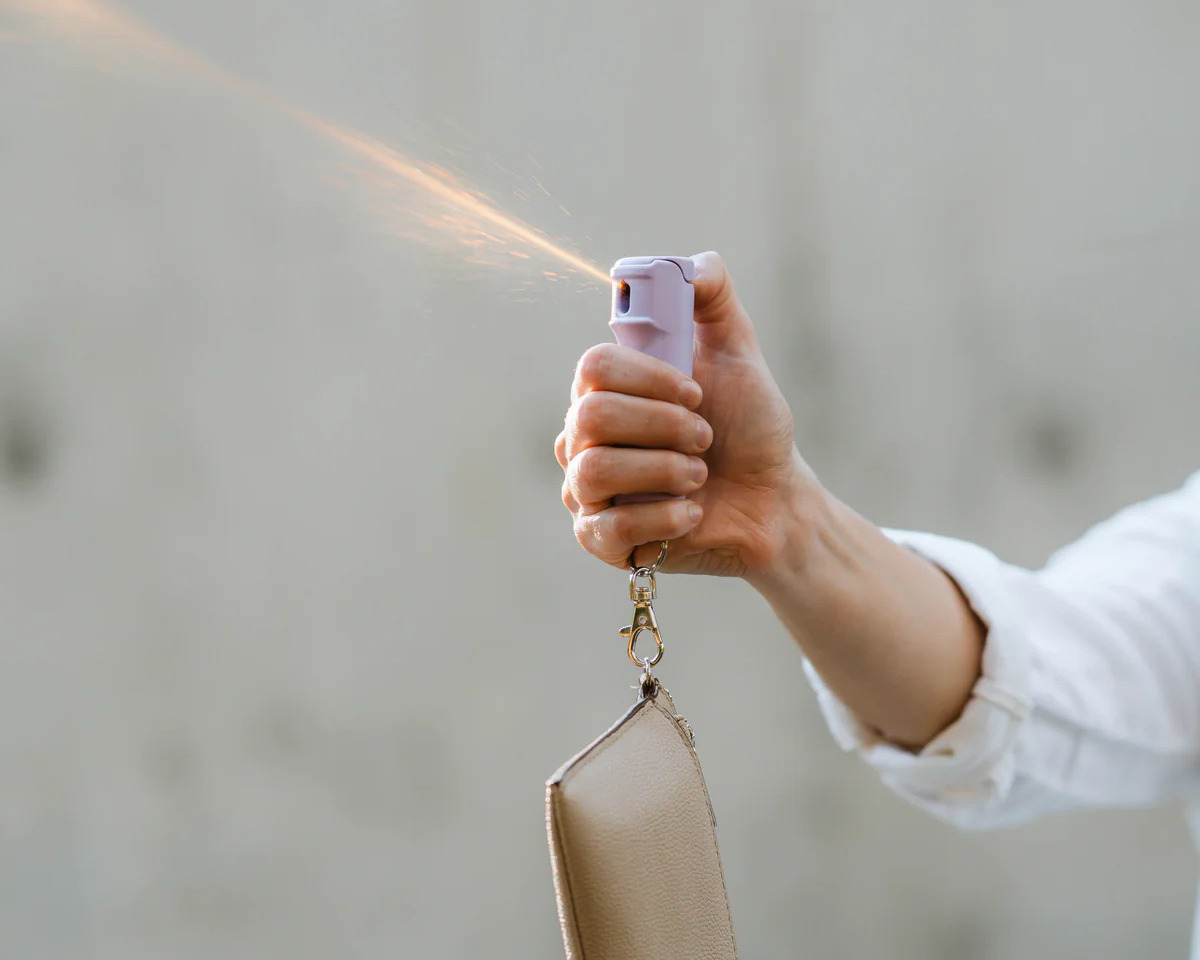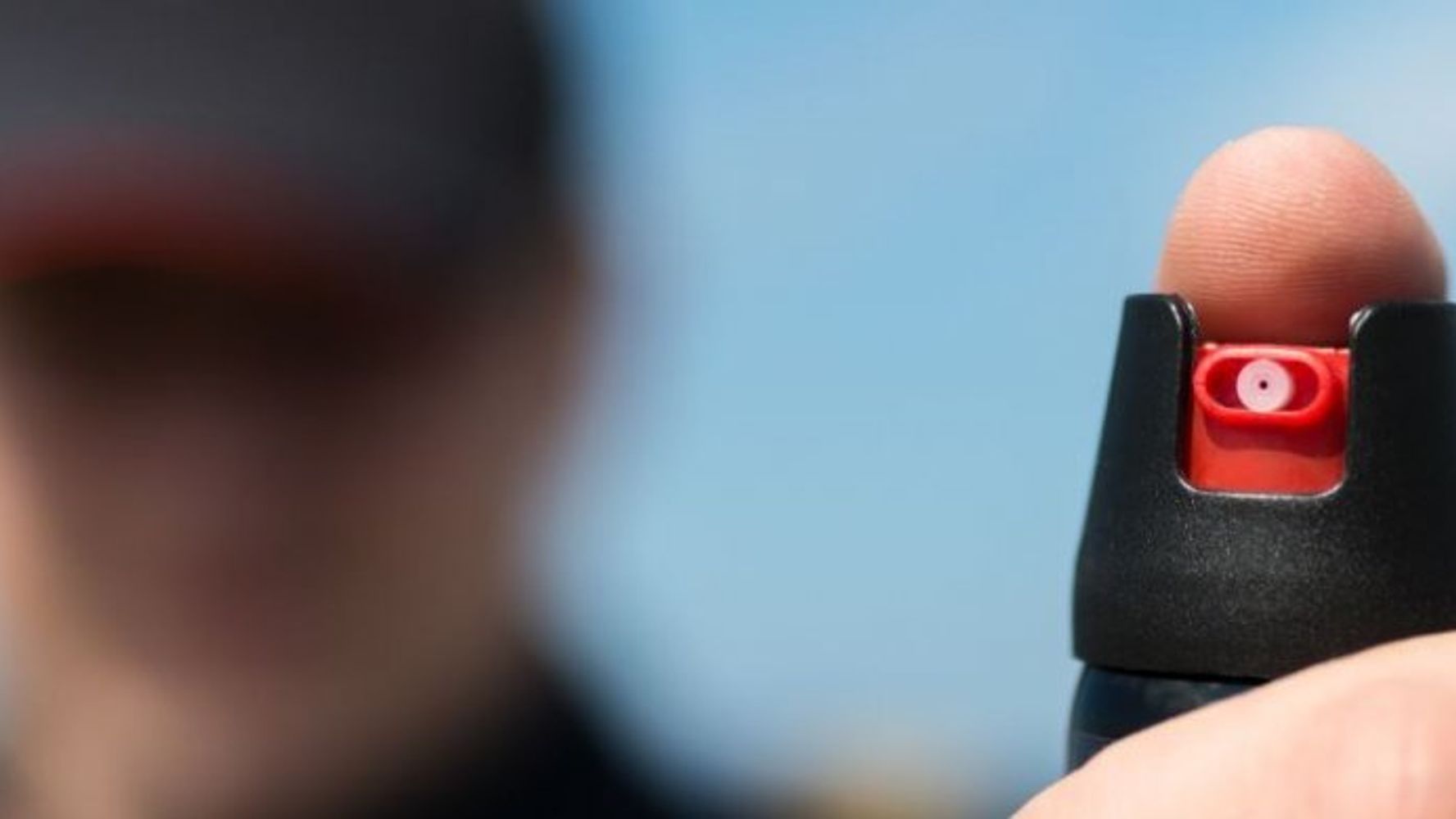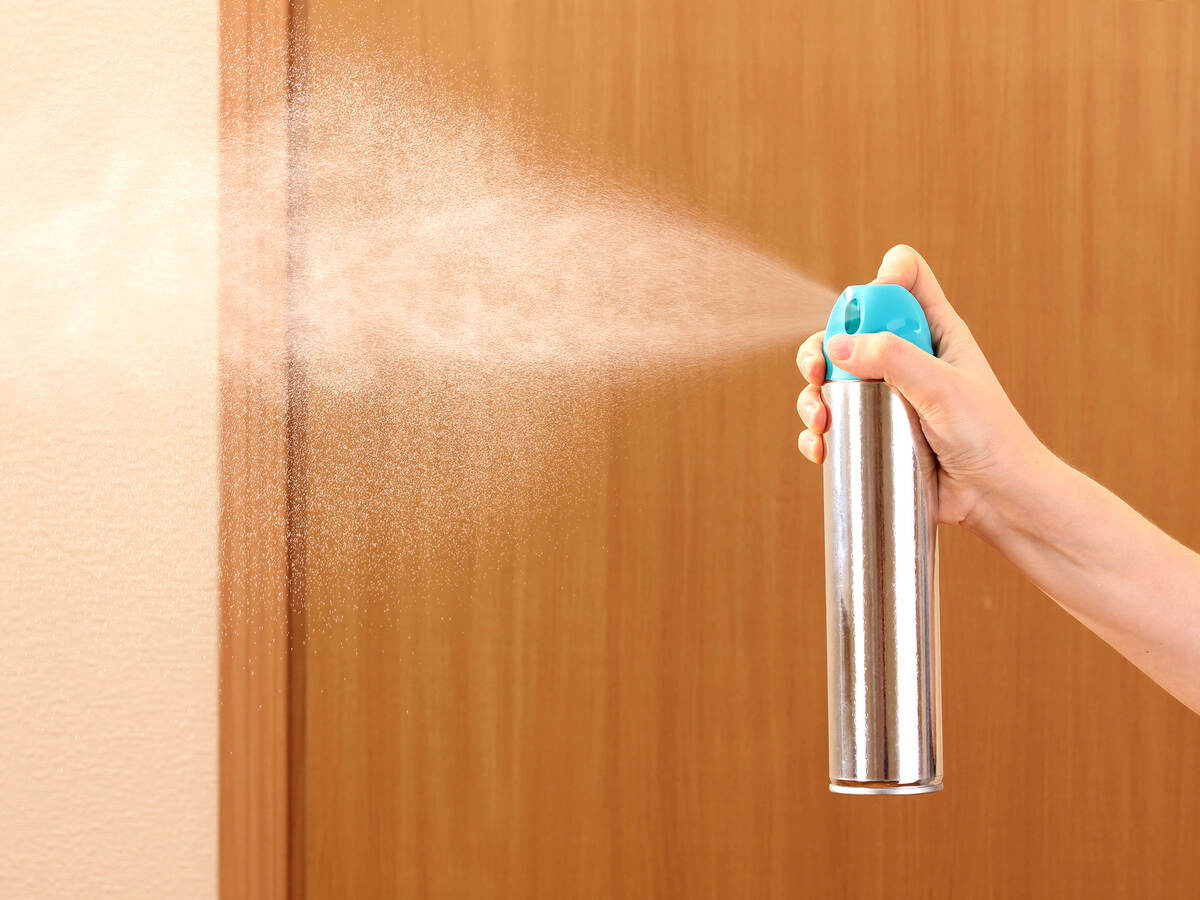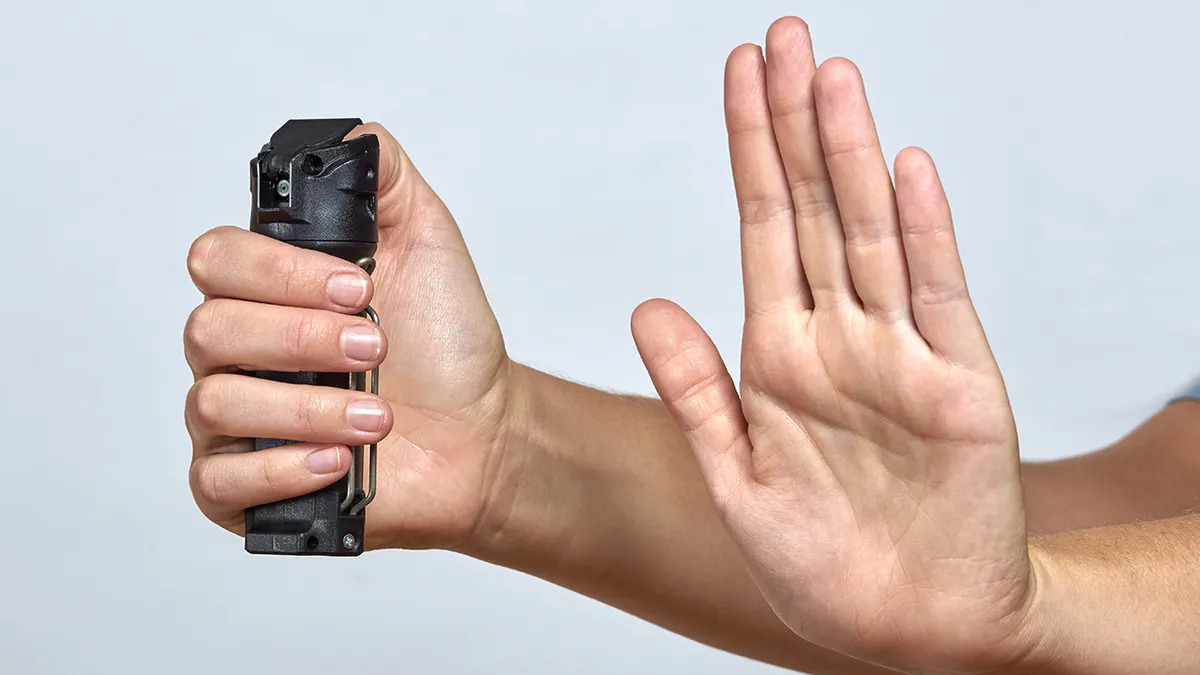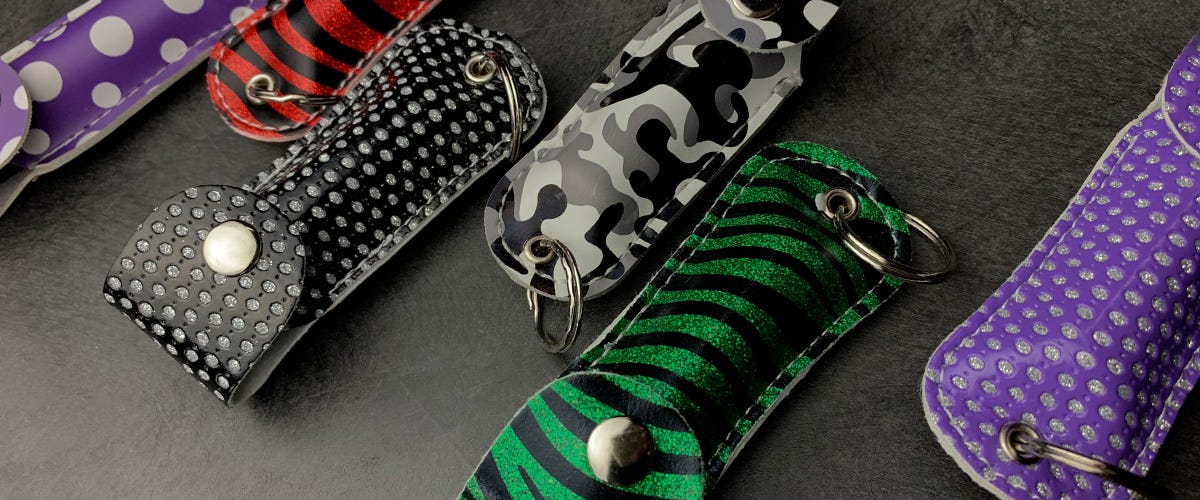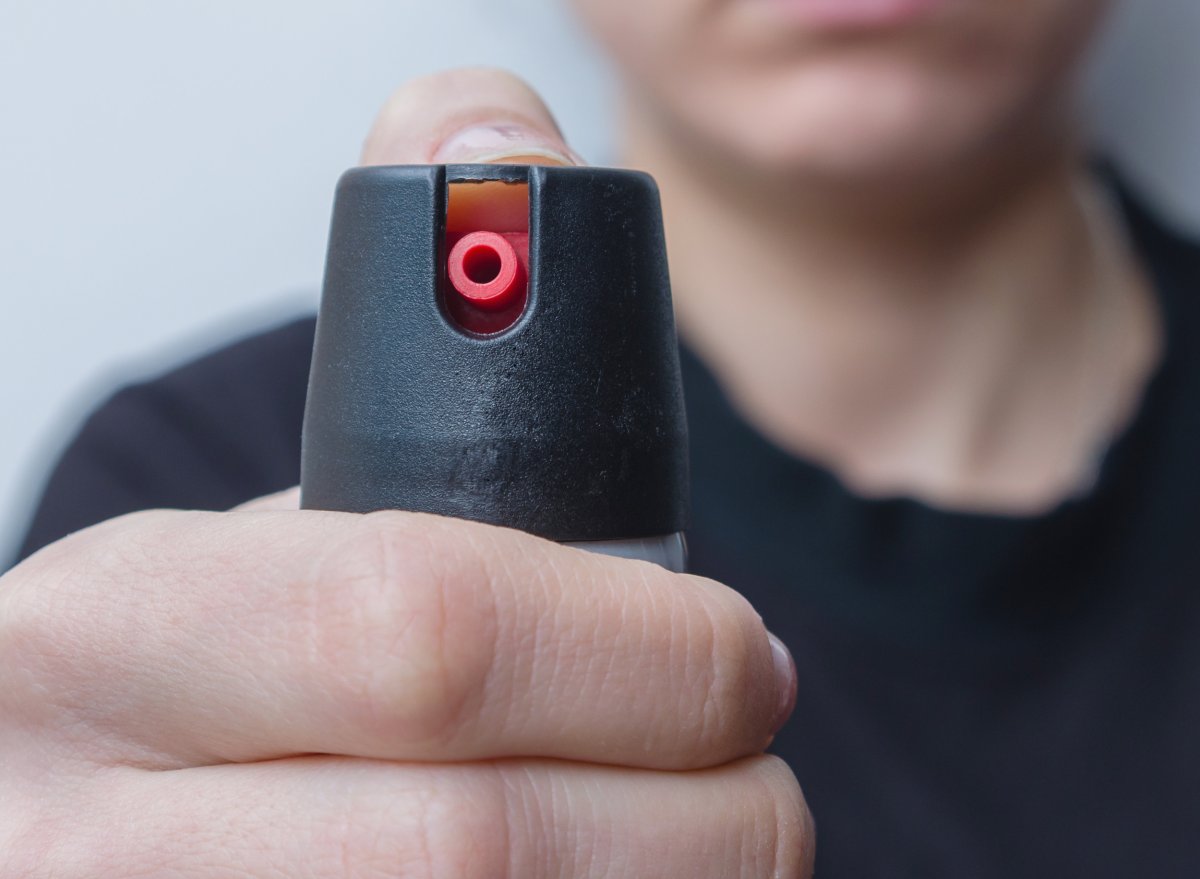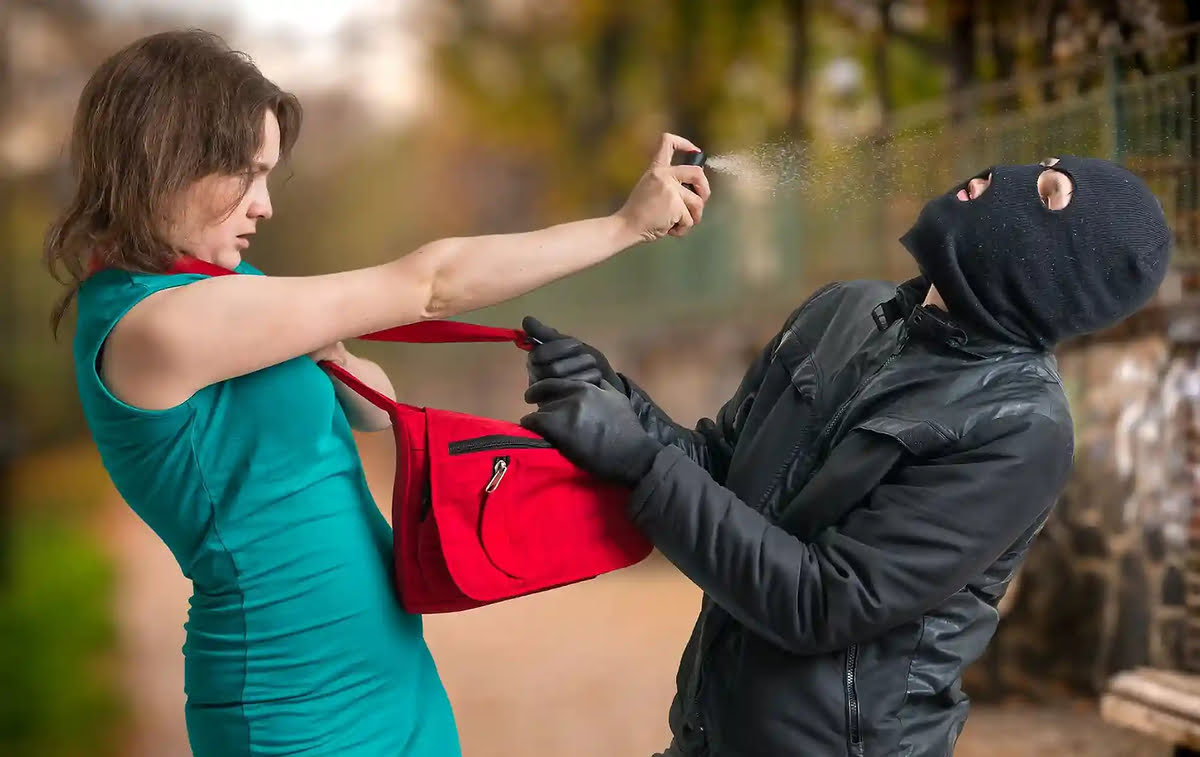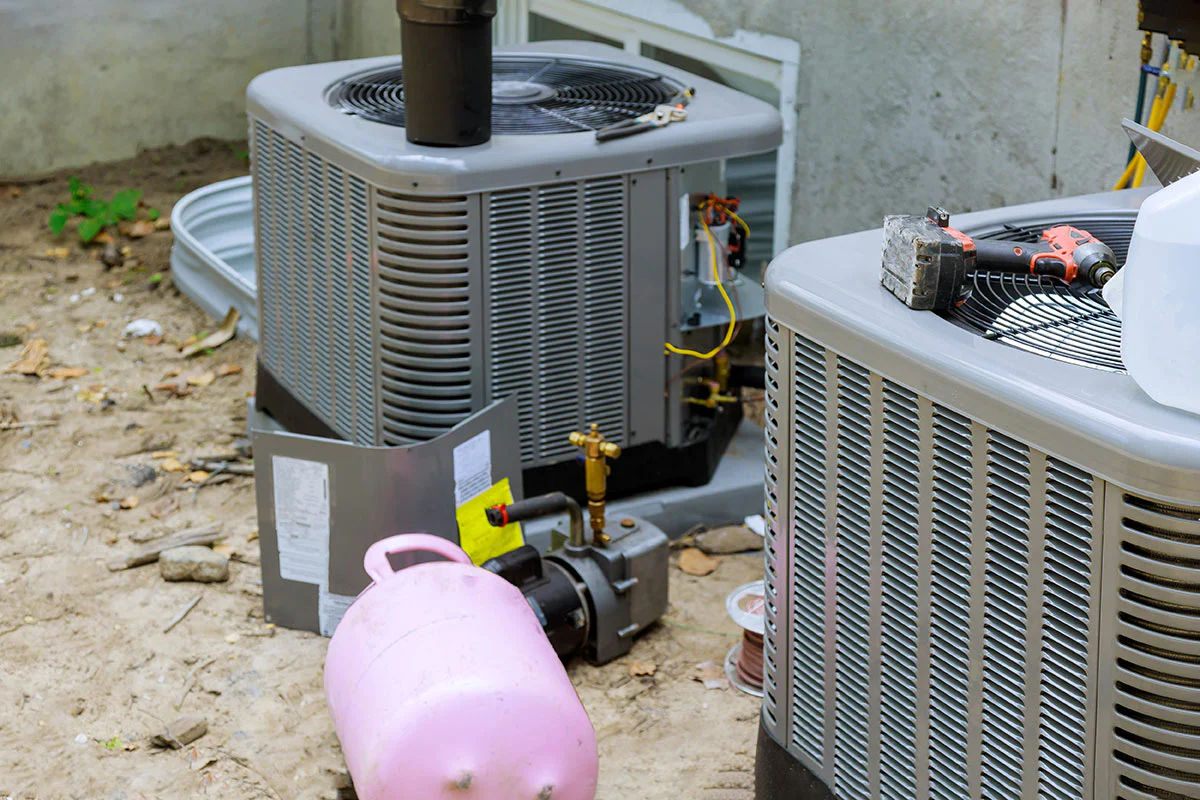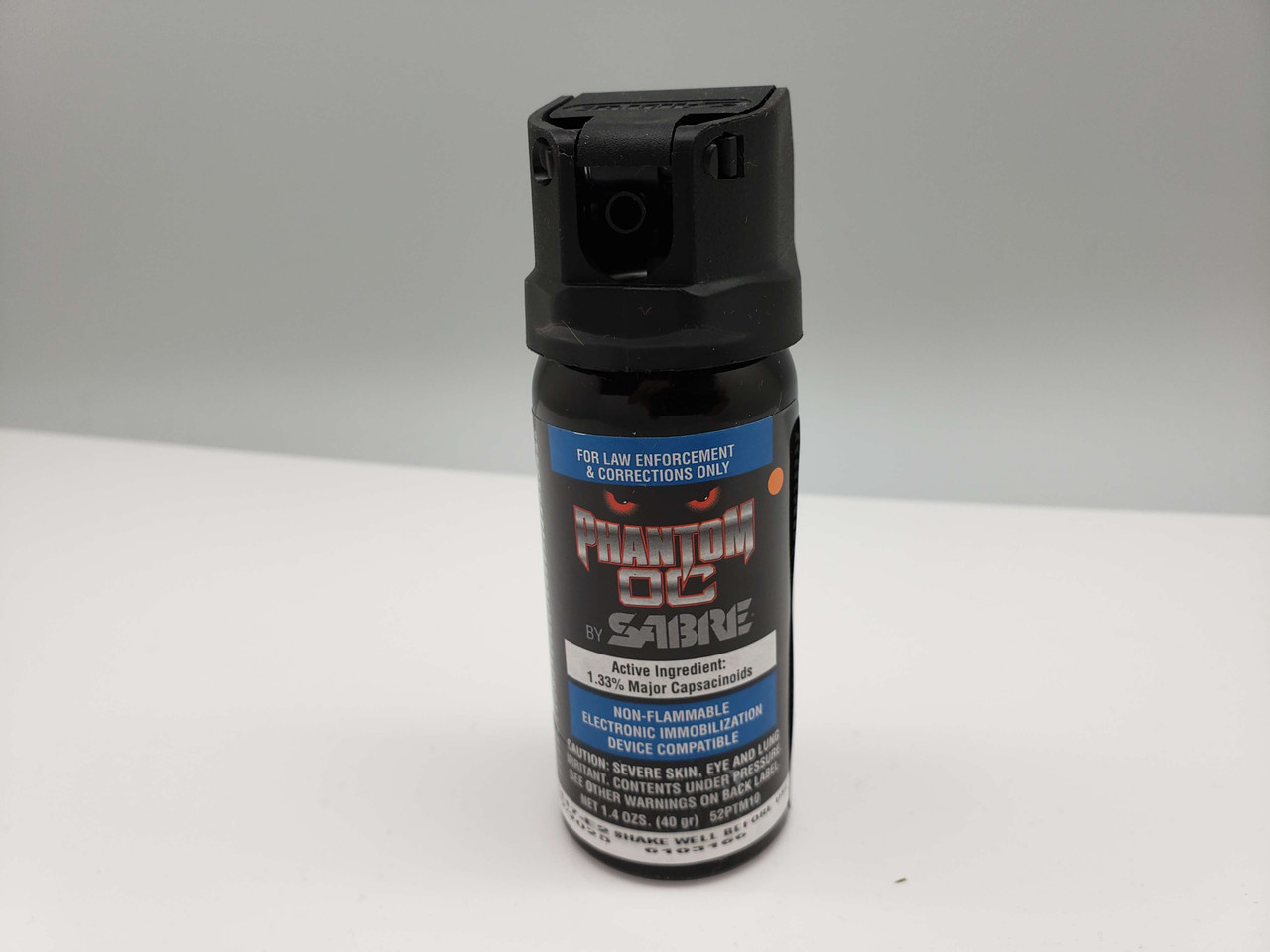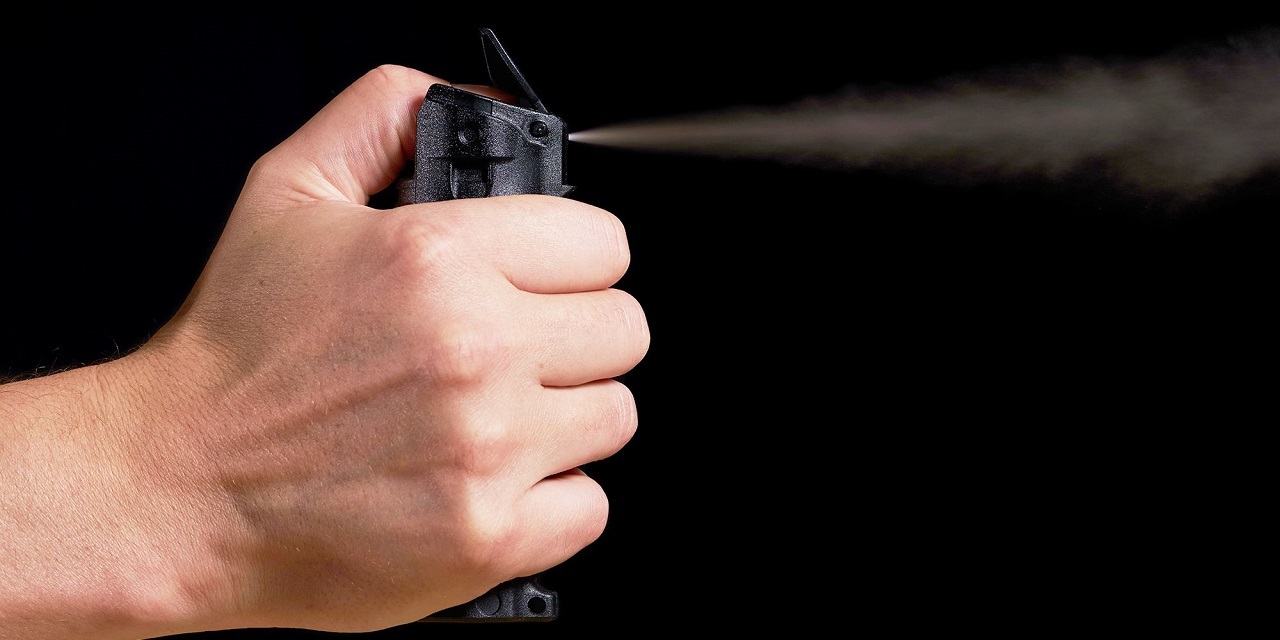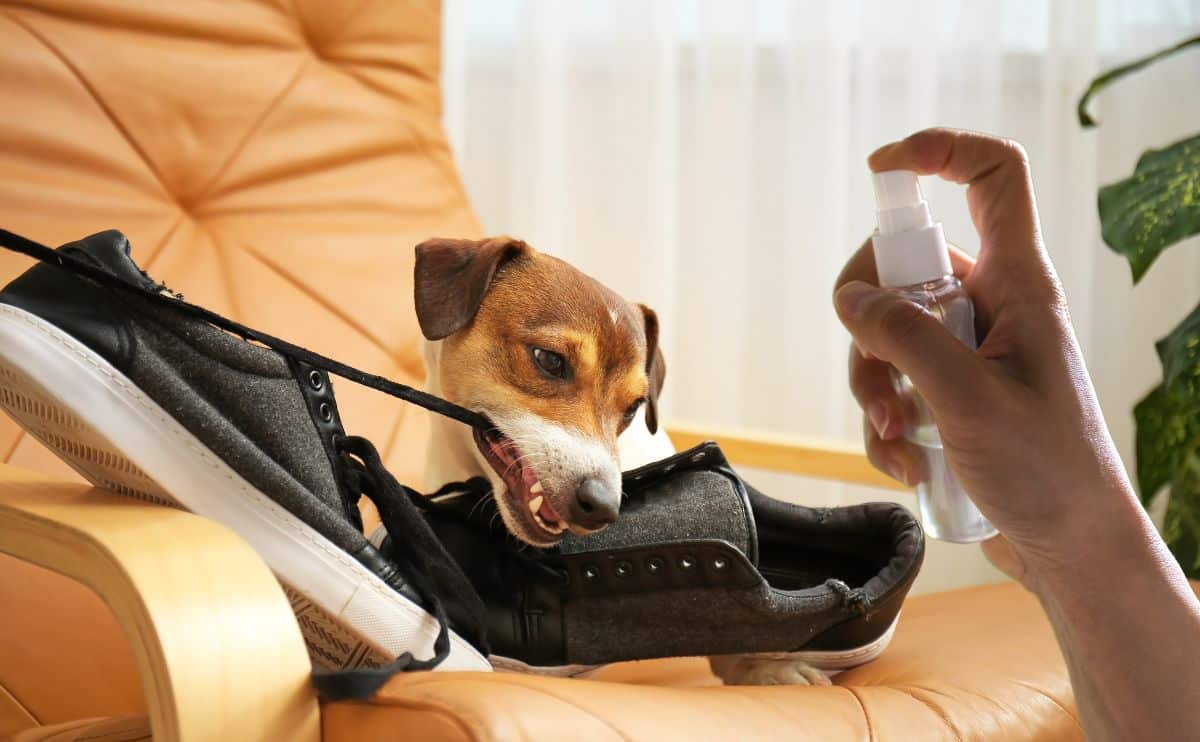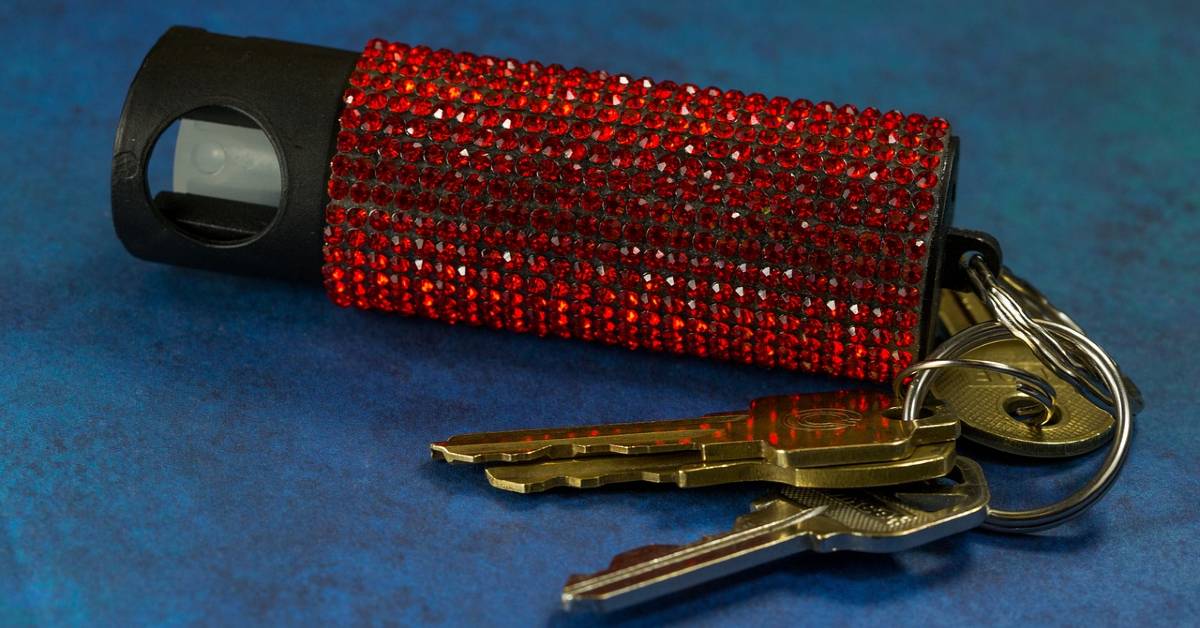Home>Home Security and Surveillance>How Long Does Pepper Spray Last In The Air
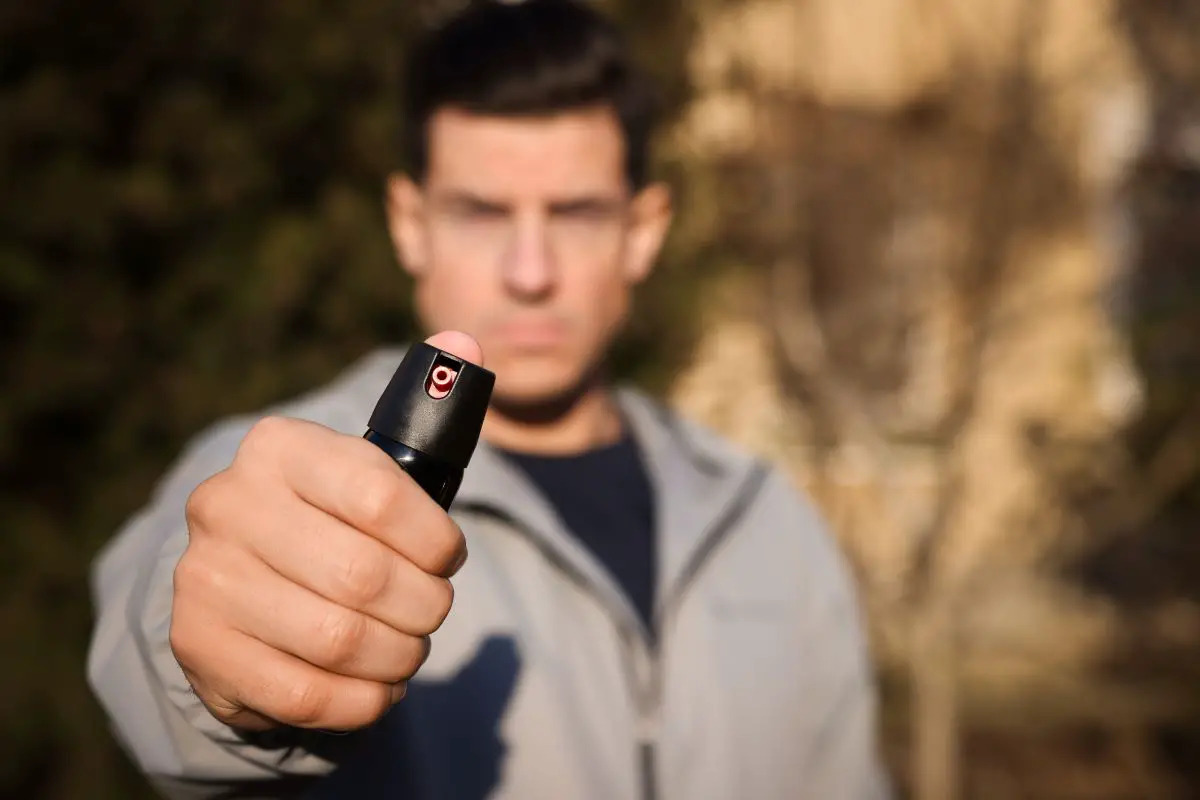

Home Security and Surveillance
How Long Does Pepper Spray Last In The Air
Modified: March 6, 2024
Discover how long pepper spray lasts in the air and enhance your home-security-and-surveillance. Stay protected with our expert tips and advice.
(Many of the links in this article redirect to a specific reviewed product. Your purchase of these products through affiliate links helps to generate commission for Storables.com, at no extra cost. Learn more)
Introduction
Pepper spray is a popular self-defense tool that can provide a sense of security in various situations. Whether you’re walking alone at night, traveling to unfamiliar places, or concerned about your personal safety, having pepper spray on hand can give you peace of mind.
But have you ever wondered how long pepper spray lasts in the air once it’s been deployed? Knowing this information can be crucial for understanding its effectiveness and making informed decisions during potential confrontations.
In this article, we will explore the factors that affect the duration of pepper spray in the air and delve into the chemical properties of this powerful self-defense tool. We will also discuss the importance of dispersion rate, environmental conditions, distance, wind speed, and the effects of pepper spray exposure. By understanding these aspects, you can make better decisions about when and how to use pepper spray for personal safety.
So, let’s dive deeper into the world of pepper spray and uncover the mysteries behind its lasting potency. Remember, knowledge is power, and being well-informed about your self-defense options is a valuable asset in any situation.
Key Takeaways:
- Pepper spray’s effectiveness in the air depends on factors like its chemical properties, dispersion method, and environmental conditions. Understanding these factors helps maximize its impact for personal safety.
- When using pepper spray, aim for the assailant’s face, maintain a safe distance, and consider wind conditions. Following safety precautions and local laws ensures responsible and effective use.
Factors Affecting the Duration of Pepper Spray in the Air
The duration of pepper spray in the air can vary depending on several factors. Understanding these factors will help you gauge the effectiveness of pepper spray and make informed decisions when using it for personal safety. Let’s explore some of the key factors that influence the duration of pepper spray in the air:
1. Chemical Properties of Pepper Spray: Pepper spray contains an active ingredient called oleoresin capsicum (OC), which is derived from hot chili peppers. The concentration of OC in the spray can affect its potency and how long it remains in the air. Higher concentrations of OC generally result in a more potent and longer-lasting spray.
2. Dispersion Rate and Method: The way pepper spray is dispersed also plays a role in its duration in the air. Different spray patterns, such as cone spray or stream spray, have varying degrees of effectiveness and staying power. Cone spray creates a wide dispersal pattern, while stream spray delivers a concentrated and targeted stream. The dispersion rate and method can affect how quickly the pepper spray disperses and how long it remains potent in the air.
3. Environmental Conditions: Environmental factors like temperature, humidity, and air circulation can impact the duration of pepper spray in the air. High humidity levels can cause the particles to become heavier and fall to the ground more quickly. On the other hand, dry and windy conditions can help disperse the spray over a larger area, potentially prolonging its presence in the air.
4. Distance and Wind Speed: The distance between the spray and the target, as well as the speed and direction of the wind, can affect how long pepper spray lingers in the air. Spraying from a closer distance may result in a more concentrated and longer-lasting spray. A strong wind blowing in the opposite direction can disperse the spray more quickly, reducing its duration in the air.
It is important to note that the duration of pepper spray in the air is relatively short compared to its overall effectiveness. The immediate effects of pepper spray, such as inflammation of the eyes, respiratory distress, and intense pain, are the primary goals when using it for self-defense.
By considering these factors, you can make more informed decisions when using pepper spray and have a better understanding of its duration and effectiveness in different situations. Remember to always use pepper spray responsibly and in accordance with the law for your safety and the safety of others.
Chemical Properties of Pepper Spray
To understand the effectiveness and duration of pepper spray in the air, it’s important to explore its chemical properties. Pepper spray contains an active ingredient called oleoresin capsicum (OC), which is derived from hot chili peppers. OC is responsible for the powerful effects of pepper spray when it comes into contact with the eyes, skin, or respiratory system of an assailant.
The main component of OC is capsaicin, a naturally occurring chemical compound found in chili peppers. Capsaicin is what gives peppers their spicy and hot sensation. When used in pepper spray, its effects are intensified, causing temporary incapacitation and extreme discomfort to the person exposed to it.
The potency of pepper spray is measured in Scoville Heat Units (SHU), which indicate the concentration of capsaicinoids present. The higher the SHU, the greater the effectiveness of the pepper spray in terms of intensity and duration of its effects.
In addition to capsaicin, pepper spray may also contain other ingredients such as solvents, propellants, and dyes. These ingredients help to deliver the pepper spray effectively and provide visibility when deployed.
When pepper spray is sprayed, it releases a fine mist or liquid containing tiny particles of OC. These particles can adhere to the eyes, skin, and mucus membranes, causing intense pain, inflammation, and temporary impairment. The effects typically last from 30 minutes to an hour, depending on various factors.
It is important to note that the effects of pepper spray are temporary and do not cause any long-term damage or lasting harm. The purpose of pepper spray is to disable the assailant temporarily and allow the victim time to escape or seek help.
It’s worth mentioning that pepper spray is a non-lethal self-defense tool and is considered legal in many countries. However, it’s crucial to check the local laws and regulations regarding the purchase, possession, and use of pepper spray in your specific area.
Understanding the chemical properties of pepper spray can help you make an informed decision about its effectiveness and duration in different situations. Remember, pepper spray is meant to be used as a last resort for self-defense, and it’s important to use it responsibly and with caution.
Dispersion Rate and Method
The dispersion rate and method play a crucial role in determining the effectiveness and duration of pepper spray in the air. How the spray is dispersed and the rate at which it spreads can impact its coverage area and staying power. Let’s explore the dispersion rate and methods commonly used with pepper spray:
1. Cone Spray: Cone spray is a common method of dispersing pepper spray. It creates a wide cone-shaped pattern that releases a mist of pepper spray over a larger area. This method allows for a greater chance of hitting the target when accuracy is not as critical. The wide dispersal pattern ensures that the spray covers a larger area, potentially affecting multiple attackers or providing a wider coverage zone, increasing the chances of hitting the assailant’s face, eyes, or respiratory system.
2. Stream Spray: Stream spray is another common method used for deploying pepper spray. It releases a concentrated and targeted stream of pepper spray in a specific direction. Stream spray is ideal for situations where accuracy is paramount, such as when dealing with a single assailant or when you need to maintain a safe distance from the attacker. The concentrated stream of spray offers better control and can provide a more direct, powerful, and longer-lasting effect.
The dispersion rate of the spray is influenced by factors like the pressure at which the spray is released and the canister’s design. Higher pressure will result in a faster dispersion rate, covering a larger area more quickly. The design of the canister, such as the size and number of outlets from which the spray is released, can also affect the dispersion rate.
It’s important to consider the distance between you and the assailant when choosing the appropriate dispersion method. Cone spray is best suited for close-range encounters or situations where you need to cover a broader area, while stream spray is more effective for longer distances or when precision is required.
When using pepper spray, it’s crucial to aim for the assailant’s face, especially the eyes and respiratory system, to maximize its effects. The duration of the pepper spray in the air will depend on the dispersion method and the concentration of the active ingredient.
Remember, proper training and understanding of how to effectively use pepper spray are essential for ensuring your safety and the safety of others. Familiarize yourself with the specific instructions provided by the manufacturer to use the spray correctly and increase its effectiveness.
By considering the dispersion rate and method, you can choose the most suitable option for your specific self-defense needs. This knowledge can help increase the chances of incapacitating an assailant and providing you with the opportunity to escape or seek help.+
Environmental Conditions
Environmental conditions play a significant role in determining the duration of pepper spray in the air and its overall effectiveness. Factors such as temperature, humidity, and air circulation can impact how long the spray lingers and how far it spreads. Let’s explore how these conditions affect the performance of pepper spray:
1. Temperature: Temperature can influence the volatility and evaporation rate of the pepper spray. In warmer temperatures, the volatile components of the spray may evaporate more quickly, reducing its duration in the air. Conversely, in colder temperatures, the spray may linger in the air longer due to slower evaporation. However, extreme temperatures, whether hot or cold, may affect the performance and stability of the active ingredients in pepper spray.
2. Humidity: Humidity levels can affect the dispersion and potency of pepper spray. High humidity can cause the particles of the spray to become heavier, causing them to fall to the ground quicker. This can reduce the duration of the spray in the air and limit its effective range. On the other hand, lower humidity levels may help the spray to disperse more effectively and remain in the air for a longer duration.
3. Air Circulation: The presence of air circulation, such as wind or drafts, can affect how pepper spray disperses in the environment. A gentle breeze or wind can carry the spray particles further, increasing the coverage area and potentially prolonging its duration in the air. However, strong winds can disperse the spray more rapidly, reducing its effectiveness and decreasing the time it remains in the air.
It’s important to note that environmental conditions can vary from one situation to another. Indoor environments, such as enclosed spaces or rooms with limited air circulation, may lead to a longer duration of the spray in the air compared to outdoor environments where wind and other factors can influence its dispersal.
Understanding the impact of environmental conditions allows you to make more informed decisions when using pepper spray. It’s crucial to consider the surroundings and adjust your strategy accordingly to ensure optimal effectiveness.
Ultimately, the primary goal of using pepper spray is to create a temporary incapacitation effect on the assailant, allowing you time to escape or seek help. By being mindful of the environmental conditions, you can maximize the effectiveness and duration of the pepper spray in self-defense situations.
When pepper spray is released into the air, it can last for about 30 minutes to an hour, depending on factors like wind and humidity. It’s important to move away from the area to avoid exposure.
Read more: How Long Does Pepper Spray Stay On Surfaces
Distance and Wind Speed
The distance between you and the assailant, as well as the wind speed and direction, are important factors that can significantly affect the duration and effectiveness of pepper spray. Let’s delve into how these factors impact the performance of pepper spray:
1. Distance: The distance between you and the assailant at the time of deployment can influence the duration of the pepper spray in the air. When spraying at closer range, the spray has less distance to travel, resulting in a more concentrated and longer-lasting effect. However, if the distance is too close, the spray may have a higher chance of splattering back onto you, potentially affecting your own safety. It’s important to strike a balance between maintaining a safe distance and ensuring optimal effectiveness.
2. Wind Speed and Direction: Wind speed and direction can greatly impact how pepper spray disperses in the air. A strong wind blowing directly at you can cause the spray to disperse more quickly, reducing its duration and effectiveness. This is because the wind carries away the spray particles, making it more challenging to hit the assailant effectively. On the other hand, if the wind is blowing in the direction of the assailant, it can aid in spreading the spray over a wider area, potentially increasing its coverage and duration. It’s essential to consider wind conditions and adjust your tactics accordingly to maximize the effectiveness of pepper spray.
When using pepper spray, it’s important to aim for the assailant’s face, particularly the eyes and respiratory system, to achieve the most significant impact. The duration of the spray in the air will depend on factors like the distance, wind speed, and direction. It’s important to practice good judgment and accuracy when deploying pepper spray to ensure the best possible outcome.
Additionally, it’s crucial to be aware of your surroundings and any potential obstacles that may affect the effectiveness of the spray. Factors like walls, fences, or other objects can hinder the dispersion of the spray, reducing its duration and effectiveness.
Remember, proper training and practice are essential for using pepper spray effectively in self-defense scenarios. Familiarize yourself with the spray’s range, capabilities, and limitations to make informed decisions during critical moments.
By considering the distance between you and the assailant and being mindful of wind conditions, you can increase the chances of incapacitating the assailant effectively, providing you with an opportunity to escape or seek help.
Effects of Pepper Spray Exposure
Exposure to pepper spray can have immediate and intense effects on the human body. Understanding these effects is crucial to comprehend the potency and potential impact of pepper spray. Let’s explore the common effects of pepper spray exposure:
1. Severe Eye Irritation: One of the most immediate effects of pepper spray exposure is extreme eye irritation. The capsaicin in pepper spray causes intense burning, stinging, and redness in the eyes. It can also lead to temporary blindness or blurred vision, making it challenging for the assailant to see and navigate their surroundings.
2. Respiratory Distress: Inhaling pepper spray can cause respiratory distress, particularly in individuals with respiratory conditions like asthma. The irritants in the spray can lead to coughing, choking, and difficulty breathing. This effect can incapacitate an assailant and make it difficult for them to pursue or continue any aggressive actions.
3. Skin Inflammation: Pepper spray can cause significant skin inflammation and irritation upon contact. It can result in redness, swelling, and a sensation of intense heat or burning on the skin. This effect, combined with the eye irritation, can create a potent deterrent against further attack.
4. Pain and Disorientation: Pepper spray causes extreme pain upon exposure, which can disorientate and incapacitate the assailant. The pain can be excruciating and overwhelming, making it difficult for them to concentrate or continue any further aggressive actions.
It’s essential to note that the effects of pepper spray are temporary and typically last between 30 minutes to an hour. After this time, the effects gradually subside, and the individual usually recovers without any lasting harm.
If you or someone else has been exposed to pepper spray, it’s important to take the following steps to alleviate the effects:
– Move to an area with fresh air to help clear the respiratory system.
– Blink rapidly to encourage tears and flush out the pepper spray from the eyes.
– Rinse the skin with water and mild soap to remove any residue and soothe the irritation.
– Avoid rubbing the affected areas, as this can exacerbate the irritation.
It’s worth mentioning that the effects of pepper spray can vary depending on several factors, including the concentration of the active ingredient, the duration of exposure, and individual sensitivity. People with pre-existing respiratory conditions or allergies may experience more severe effects.
As with any self-defense tool, it’s essential to use pepper spray responsibly and in accordance with local laws and regulations. Familiarize yourself with the specific instructions provided by the manufacturer and consider seeking professional training to ensure its effective and responsible use.
By understanding the effects of pepper spray exposure, you can make informed decisions when using it for self-defense and recognize its potential impact on potential assailants.
Safety Precautions When Using Pepper Spray
Pepper spray is a valuable self-defense tool that can provide a sense of security in various situations. However, it’s essential to use pepper spray responsibly and take certain precautions to ensure the safety of yourself and others. Here are some important safety measures to keep in mind when using pepper spray:
1. Know the Laws: Familiarize yourself with the local laws and regulations regarding the purchase, possession, and use of pepper spray in your area. Different jurisdictions may have specific restrictions or requirements, so it’s crucial to understand and adhere to them.
2. Read and Follow Manufacturer’s Instructions: Carefully read and understand the instructions provided by the manufacturer of your pepper spray product. Each brand may have specific guidelines and recommendations for the proper use and storage of their product. Follow these instructions to ensure effective and safe usage.
3. Aim for the Assailant’s Face: When using pepper spray, aim for the assailant’s face, specifically targeting the eyes and respiratory system. This will maximize the spray’s effectiveness and increase the chances of temporarily incapacitating the attacker. Be mindful of your surroundings to avoid inadvertent exposure to innocent bystanders.
4. Maintain a Safe Distance: Use pepper spray from a safe distance to protect yourself from potential harm. While close-range deployment can provide a more concentrated effect, it also increases the risk of the spray splattering back onto you. Maintain a distance that allows you to effectively aim and escape if necessary.
5. Practice Proper Aim and Technique: Practice using your pepper spray to ensure accuracy and efficiency during high-stress situations. Familiarize yourself with how to quickly and effectively deploy the spray, making sure to aim for the assailant’s face. Consider seeking professional training or guidance to learn proper techniques.
6. Consider Wind Conditions: Take into account the wind speed and direction when using pepper spray. Strong winds can disperse the spray more quickly, diminishing its effectiveness and potentially affecting innocent bystanders. Position yourself to minimize the impact of wind on the spray’s dispersion.
7. Store Properly and Check Expiry Dates: Store your pepper spray in a cool, dry place, away from direct sunlight and heat sources. Check the expiry date regularly and replace the canister if it has expired. Expired or compromised pepper spray may not be as effective and may pose safety risks.
8. Avoid Using as a Toy or Experiment: Pepper spray should never be used as a toy or for experimental purposes. It is a self-defense tool designed to incapacitate attackers temporarily. Misuse or inappropriate use can lead to harm or legal consequences.
9. Seek Medical Assistance if Required: If you or someone else has been exposed to pepper spray and experiences severe or prolonged symptoms, seek medical assistance. While the effects are generally temporary, individuals with pre-existing respiratory conditions or allergies may require additional medical attention.
Remember, self-defense should always be used as a last resort, and it’s important to prioritize personal safety and the safety of others. Using pepper spray responsibly and following these safety precautions will help ensure its effective and safe use for personal protection.
Conclusion
Pepper spray is a powerful tool that can provide a sense of security in potentially dangerous situations. Understanding the factors that affect the duration of pepper spray in the air and its overall effectiveness can help you make informed decisions when using it for self-defense.
Factors such as the chemical properties of pepper spray, dispersion rate and method, environmental conditions, distance, and wind speed all play a role in determining how long pepper spray remains in the air. It’s important to consider these factors to maximize the spray’s effectiveness and increase your chances of incapacitating an assailant.
Pepper spray, with its active ingredient oleoresin capsicum (OC), delivers immediate and intense effects upon exposure. It causes severe eye irritation, respiratory distress, skin inflammation, and pain, which can disorientate and incapacitate an assailant temporarily.
When using pepper spray, it’s crucial to take safety precautions. Familiarize yourself with the local laws, read and follow the manufacturer’s instructions, and practice proper aim and technique. Maintain a safe distance, consider wind conditions, and store the spray properly to ensure its efficacy and longevity.
Remember, pepper spray is a self-defense tool and should be used responsibly. It’s important to prioritize your safety and the safety of others. Seek professional training and understand the proper procedures for using pepper spray in different scenarios.
In conclusion, pepper spray can be a valuable asset in your personal safety toolkit. By understanding its chemical properties, dispersion methods, and the effects of exposure, you can effectively utilize pepper spray as a temporary incapacitating tool to create opportunities for escape or seek help.
Always use pepper spray responsibly and within the confines of the law. Stay informed, practice caution, and prioritize safety to empower yourself and enhance your personal protection in potentially threatening situations.
Frequently Asked Questions about How Long Does Pepper Spray Last In The Air
Was this page helpful?
At Storables.com, we guarantee accurate and reliable information. Our content, validated by Expert Board Contributors, is crafted following stringent Editorial Policies. We're committed to providing you with well-researched, expert-backed insights for all your informational needs.
